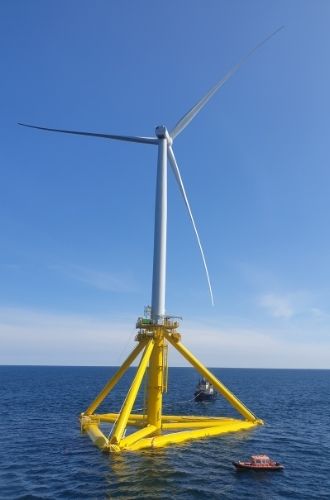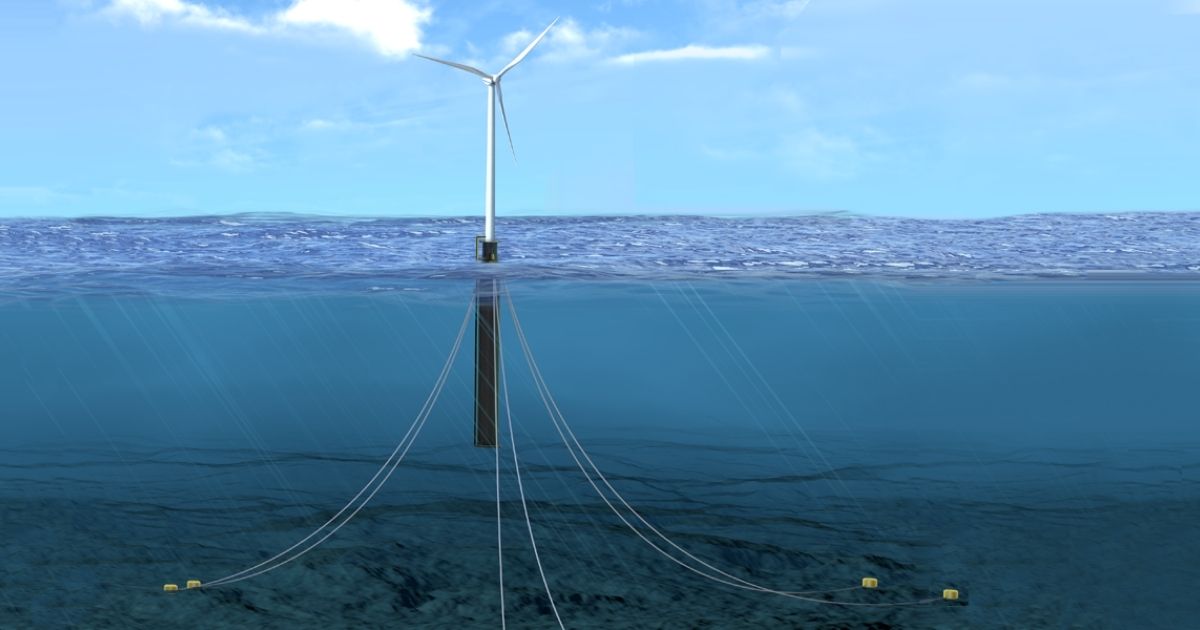In under a decade, the benefits of advancing into deeper waters with floating wind constructions have begun to be realized. Innovative technologies and significant industry experience are supporting the exploitation of the stronger and more consistent wind resources that characterize these deeper marine environments.
A gamechanger for offshore wind
The forthcoming COP26 summit will highlight the actions needed to achieve global climate change goals and in the run-up to the RenewableUK conference, principal trade body for the UK’s renewable energy industry, stated that ‘the next step in our offshore wind ambition could be the most important to the world.’ Described as an offshore wind gamechanger, floating designs are removing barriers to future development, stimulating technology innovation and opening new opportunities.
Considerably deeper waters, adverse seabed conditions and potentially more hostile environments limit the exploitation of vast offshore wind resources to turbines that are not fixed to the seabed. But effectual development of floating wind generation is not simply a matter of transferring the skills, technologies and operational practices associated with more conventional fixed-bottom foundations, such as, monopiles that are typically installed and operate in waters less than 50 meters deep.
Achieving commercial scale deployment
Fundamental in the drive to reach optimum commercialization of floating wind are two factors:
- the ability to repurpose methods and expertise from the oil and gas industry and the fixed-bottom offshore renewable energy sector
- investment in target areas such as technology, installation and maintenance In a recent initiative to support the acceleration of technologies, a Scottish Government-backed competition, yielded ideas and technology for critical challenge areas. Amongst the winners was a consortium led by Fugro.
The winning design was a remote system to track fatigue in mooring lines – the vital components that attach floating wind turbines to the seabed. This innovative monitoring approach delivers the potential to reduce, or even eliminate, the requirement for subsea inspections of mooring components by remotely operated vehicles and divers, leading to significant cost savings and reducing safety risks.
 Floating wind TetraSpar demonstration project
Floating wind TetraSpar demonstration project
Remote systems boost efficiency
Because floating wind infrastructure design is still in its infancy, integration of new technology is feasible from the outset. Amongst the latest technology are intelligent monitoring solutions and remote operations centers (ROCs) that address the high hazard profile of these assets and offer the combined advantages of a ‘connected world’ in real time.
Assembled in bespoke packages, sensors can monitor essential floating components. During towing and installation positioning, heading and inclination data from these sensors can be captured. At onshore control facilities, such as Fugro’s network of ROCs, essential geodata and diagnostics can be monitored continuously so that operational problems or failure scenarios, such as anchor drag or trawler snagging, can be detected instantly and rapid decisions made. Operating round-the-clock, the remote nature of these ROCs means that they are not subject to geographical limitations and can connect with any global site.
ROCs can also improve the cost-efficiency of operations and maintenance programs. Replacing conventional 5-year subsea inspection regimes with an intelligent approach, inspections can be carried out only when necessary, minimizing in-person investigations and reducing HSSE risks. A smart approach to maintenance in floating wind assets is also advantageous where, unlike for fixed-bottom assets, deeper waters prevent the use of jack-up platforms so that DP2 vessels or uncrewed surface vessels are necessary.
Floating potential with global reach
Positioned on the precipice of commercialization, the floating wind sector is forecast to scale up to approximately12 GW of renewable energy by 2030, with new technology a crucial factor in lowering costs.
Thanks to development support from the UK, international trade associations like the Global Wind Energy Council and world-leading supply chain companies, investment is already producing results in the UK as well as Norway, France, Portugal and Japan. Technology innovators such as Fugro, with global expertise and worldwide presence, are now set to amplify the stated ambitions for countries such as South Korea, Spain, China and the USA, as well as the deepwater areas of the Asia-Pacific.
Did You Know?
- Approximately 80 % of the world’s offshore wind resource potential is in waters deeper than 60 meters
- Floating wind has the potential to power 12 million homes in Europe by 2030
- By 2030, the floating wind market is estimated to be worth £32 billion
- Between 2011 and 2016, a floating offshore wind project prototype survived extreme weather conditions completely unscathed, including waves of 17 meters and 60 knot-winds
- Fugro’s eight ROCs have completed over 300,000 remote operations projects for clients around the world
By Alastair McKie Director of Remote Operations at Fugro, Europe & Africa


